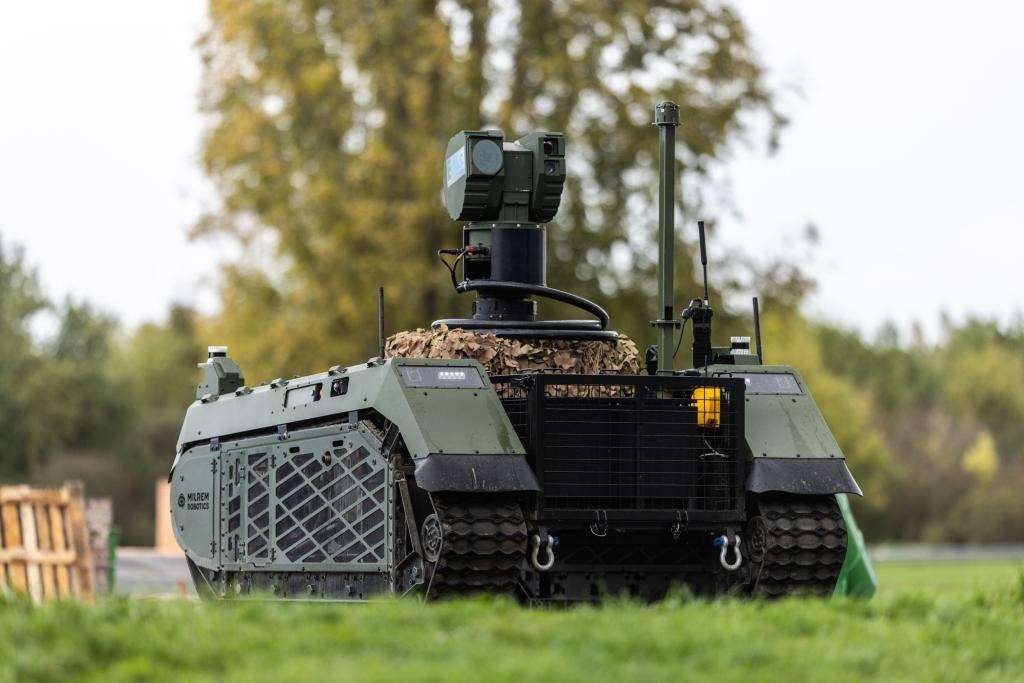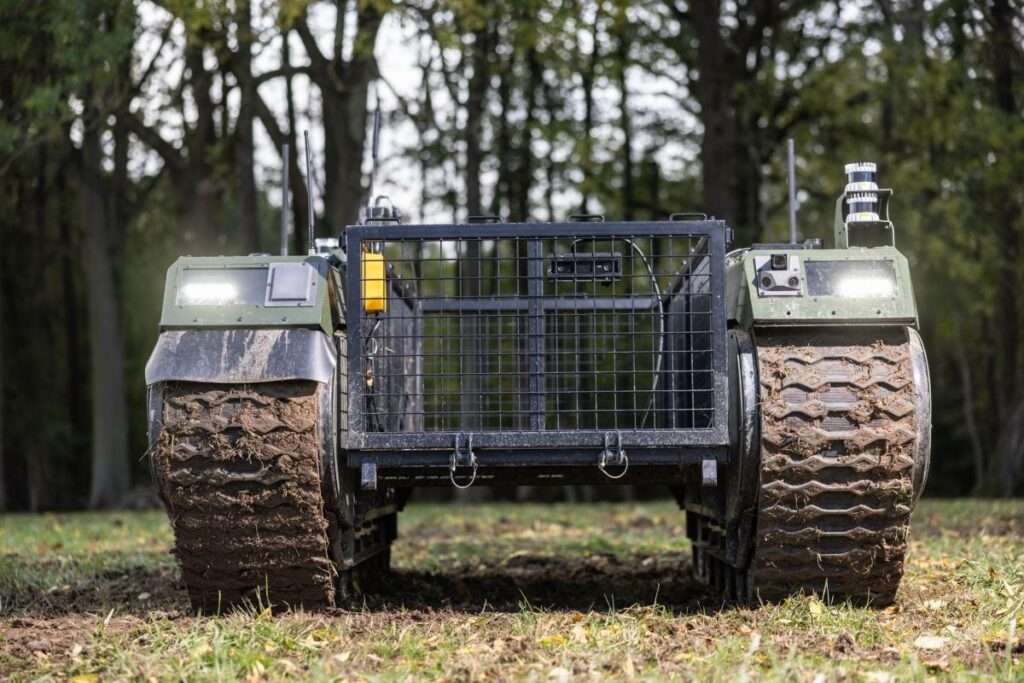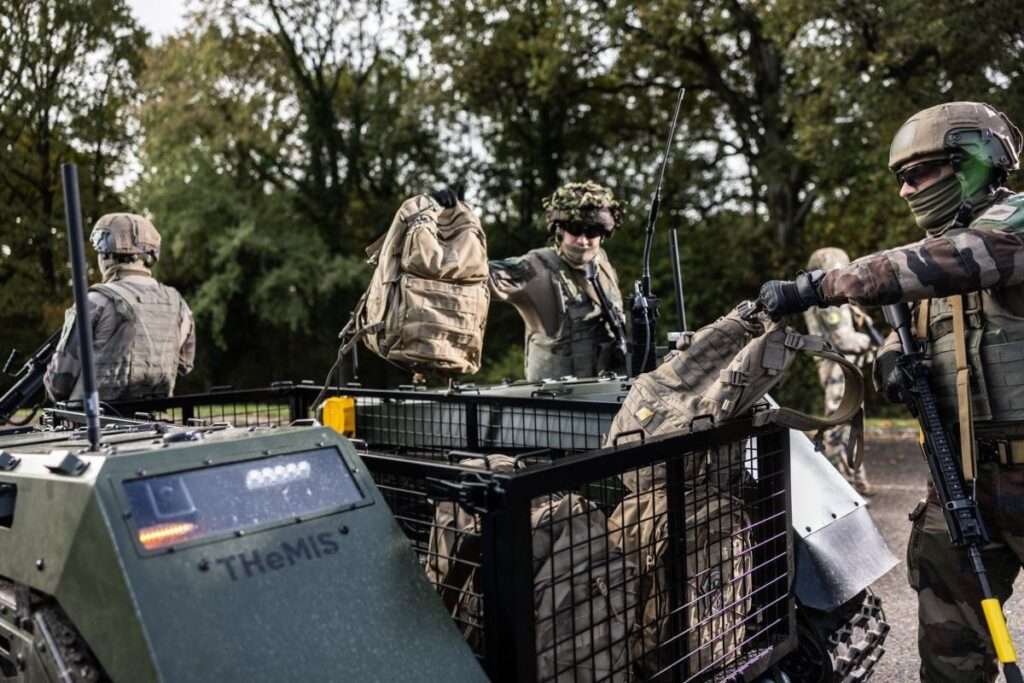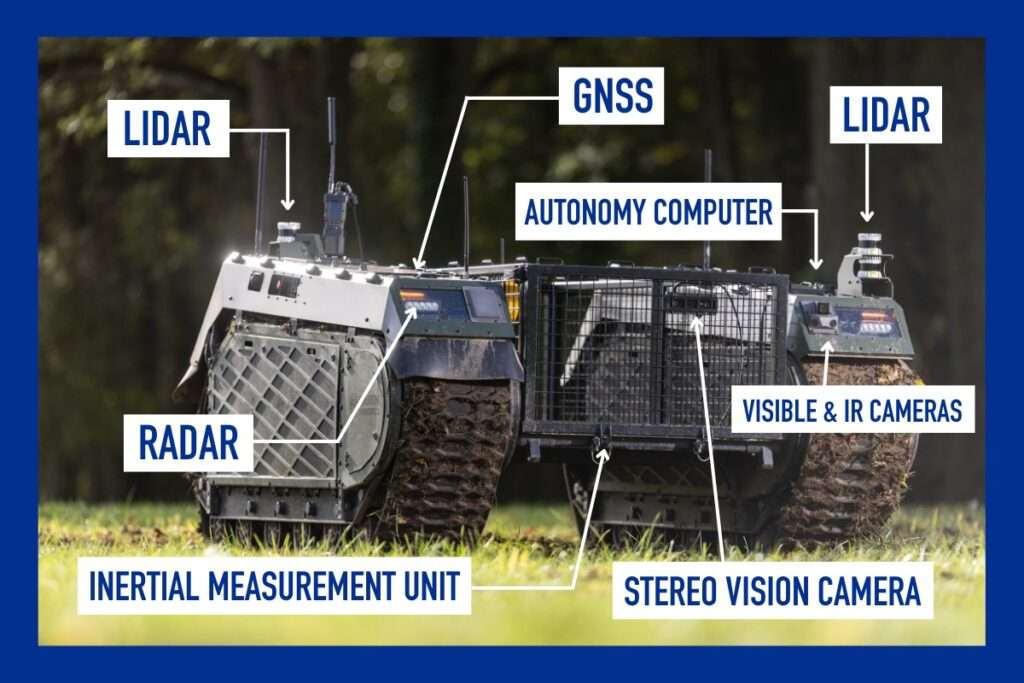
Since 2020, a dozen or so staff from Safran Electronics & Defense have deployed their skills in optronics, navigation, and electronics as part of the integrated Modular Unmanned Ground System (iMUGS) European defense project. This project aims to design and implement autonomy solutions for the THeMIS multi-role unmanned ground vehicle (UGV) built by Milrem Robotics. On October 26, 2022, representatives of the government, military, and industrial operators met at the Satory camp in Versailles, to watch a demonstration of the THeMIS UGV in support and assistance missions for a combat unit or section. The opportunity to go behind the scenes on this large project.
Before robots, new mobilities drew the attention of our experts
Back in 2014, Safran Electronics & Defense identified the issue of new, more autonomous ground and air mobility as a matter of interest. Our historical skills in detection and recognition, navigation, guidance, electronics and critical system software are necessary for platform autonomy.
Safran Electronics & Defense therefore implemented a strategy, expanded collaborative efforts and developed projects to acquire the necessary skills, experience, credibility and visibility to anticipate future needs, especially in terms of defense. It was awarded two emblematic contracts which supported this strategy: the FURIOUS preliminary design project financed by the DGA and its European equivalent, iMUGS.

A more autonomous unmanned ground vehicle to meet the needs of military operations
For two and a half years, the iMUGS program has focused on making the THeMIS tracked UGV more autonomous. The aim is simple, make it capable of more autonomous mobility so as to reduce operator cognitive load as much as possible for greater efficiency, resilience, and more applications.
The program is funded by the European Commission, so it carries major ambitions of interest to all European armed forces: develop technologies to reduce troop exposure to danger, relieve them of a number of tasks and provide an opportunity to carry and utilize extra gear and firepower with the deployment of multiple autonomous platforms.

For the 13 European industrial members of the consortium, the unmanned vehicle platform served as an integration and test platform for autonomy technology components and functional chains. Such components and chains have been officially presented as and when their design phases have completed. A fifth demonstration was hosted by Safran Electronics & Defense and Nexter on October 26, 2022, under the watchful eye of representatives from several European countries, military organizations and potential future customers.
The now autonomous unmanned ground vehicle supported combat units on multiple missions through scenarios developed by industrial partners and the French Army. Intelligence gathering, video retransmission, casualty evacuation. The demonstration was the ideal opportunity to prove the maturity of the autonomy functions and measure the operational value of this class of autonomous vehicle deployed with a combat unit or section.
This demonstration was the culmination of the efforts towards the project. Especially for Safran Electronics & Defense, who led the principal sub-project “Autonomy” for iMUGS, focusing on the development of the system architecture of this UGV and the autonomy algorithm components.

The added value of Safran Electronics & Defense: detection and recognition, navigation, guidance, electronics, and software integrated onboard. A multi-mission impact team!
“At Safran Electronics & Defense, our ambition is to be a preferred partner for companies wishing to integrate autonomy into their platforms,” explains Géraud Allard, Innovation program manager at Safran Electronics & Defense, who selected and managed the iMUGS team within the company.
Alongside their colleagues from Nexter, Diehl Defence and Milrem Robotics, the Safran Electronics & Defense crew worked on the backbone system architecture as well as the development and integration of hardware and software components in the form of an autonomy kit for the THeMIS platform.
The modular open architecture, fully designed by Safran Electronics & Defense, also needed to be capable of hosting the technology, hardware, and software systems developed by the industrial partners. A challenge that was successfully met by the Safran Electronics & Defense team.
Whether in terms of optronics, inertial navigation, or system architecture, seniors and new hires blended their expertise and capacity for innovation to develop:
- The system architecture for autonomy. This is the keystone of the project, the backbone of the autonomous unmanned vehicle. The architecture is modular and open. It enables the integration of hardware or software components developed by our partners Nexter and Diehl Defence; this electronic backbone allows the integration and orchestration of a wide range of algorithms. “The electronic backbone is the functional chain where everything is integrated, our own developments and those of partners. It was all the more delicate to manage, develop and integrate given that our partners are spread across the four corners of Europe. We needed a common architecture and tools to facilitate this integration,” explains Géraud Allard.
- The algorithms used to acquire and analyze position data supplied by various detectors and serving to control vehicle movement in a “GNSS-denied” environment.
- The algorithms used to acquire and analyze detection and recognition data to understand the environment and build a terrain map.
- Lastly, a planning and execution system, integrating innovative AI solutions used to define the vehicle’s route or trajectory.
This project was also the opportunity for Safran Electronics & Defense to involve and trust some new graduates.
Paul Romedenne, a new Systems Engineer recruited via the Graduate Engineering Program, recounts his experience on this European project.
Future products in European Defense in construction.
Last stage of iMUGS: the sixth and final demonstration. It will take place in Germany on December 15. Followed by the potential launch of an iMUGS 2 program, again headed up by Milrem to bring greater maturity to the project.
But for Safran Electronics & Defense, autonomous vehicle systems do not stop at the borders of the iMUGS program. The technologies developed should be usable by other types of unmanned ground vehicles.
At each stage of the project, Safran Electronics & Defense staff made a point of designing technologies not tied to the Milrem Robotics platform, with the intention of being able to deploy them in other environments and make sustainable use the know-how acquired.
Géraud Allard recounts how his team proceeded: “At times we were of course in touch with the platform. Certain technologies are very particular to the THeMIS and are specific to it. But the software components and algorithm solutions, as well as the autonomy backbone system were developed to function independently. This is one of the basic requirements for all our developments. As Safran Electronics & Defense is not a platform builder, the future business opportunity is to make the platforms of other constructors autonomous. We tried to be as non-proprietary as possible!”
Currently more than ever, European defense is pushing through multiple industrial projects to foster a consistent military equipment base across EU countries. A technological gathering that Safran Electronics & Defense does not aim to miss for any reason.
What is iMUGS?
iMUGS or integrated Modular Unmanned Ground System is a program led by Estonian firm Milrem Robotics. Its purpose is to define and develop autonomy solutions (modular technology components associated to a central architecture) on the THeMIS ground vehicle platform.
The aim is simple: ensure that the unmanned ground vehicle is autonomous and can support military operations by conducting tactical missions.
In 2020, iMUGS was one of the projects selected by the European Union as part of the European Defence Industrial Development Program (EDIDP), a European R&D program to co-finance the joint development of equipment, systems, and technologies.
iMUGS was launched in December 2020, benefiting from an EU grant of €30.6 million. The program will end in 2023.
Project partners
iMUGS brings together 7 countries (France, Estonia, Finland, Spain, Germany, Latvia, Belgium) and 13 partners, each responsible for a specific dimension of the project:
Autonomy: Safran Electronics & Defense | Diehl | Nexter | MILREM
Communication: Bittium Wireless | LMT
Swarming mode: DotOcean | Insta Defsec | Royal Military Academy of Belgium
Instrumentation and control: GMV – Sol.One
Cybersecurity: Talgen
Platform: MILREM
Use case: KMW | Nexter

Leave a Reply